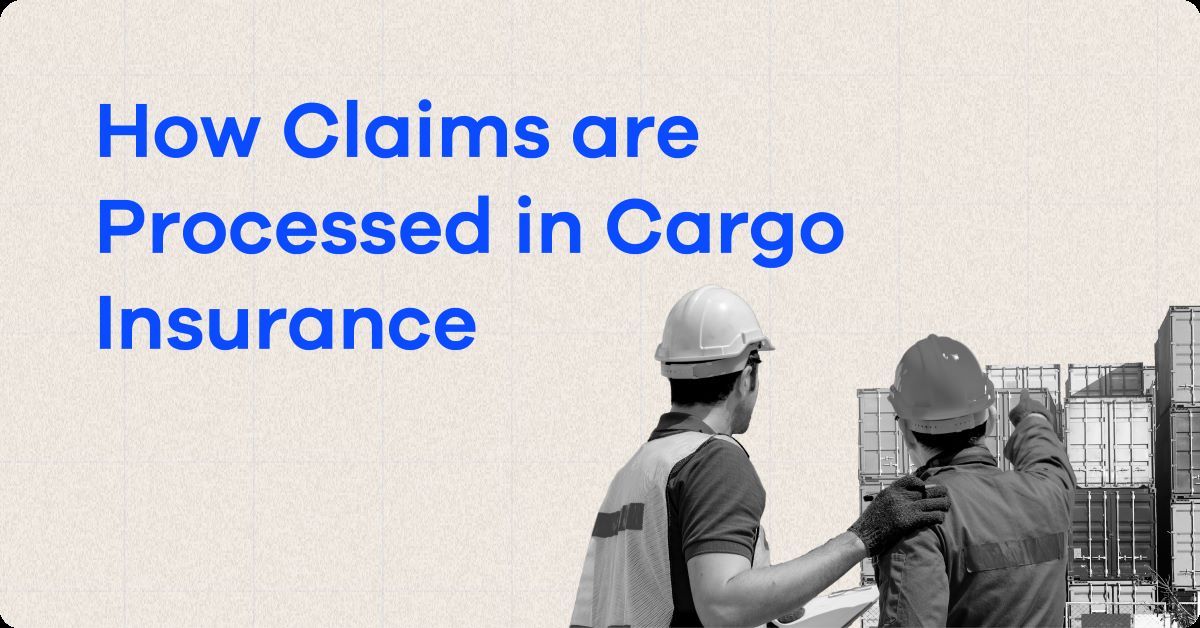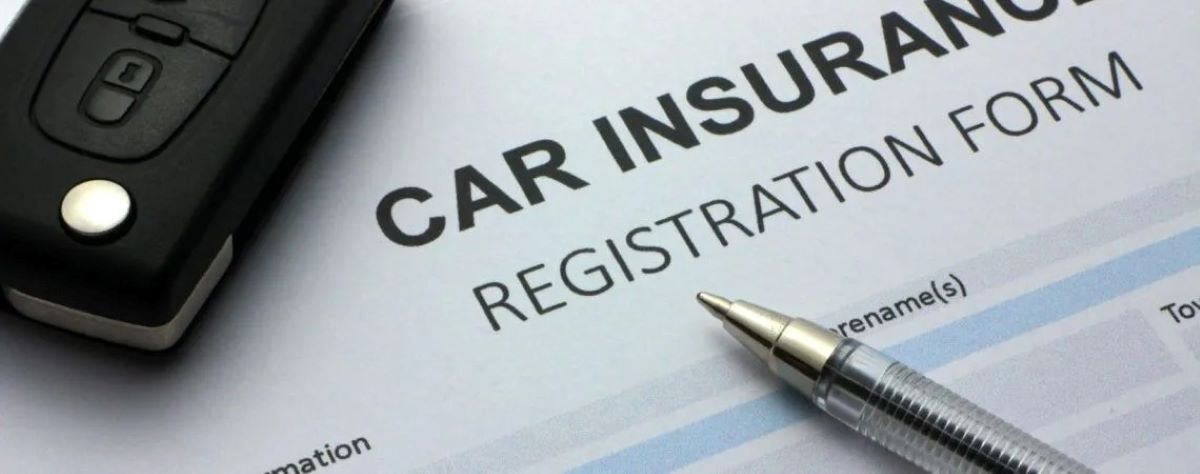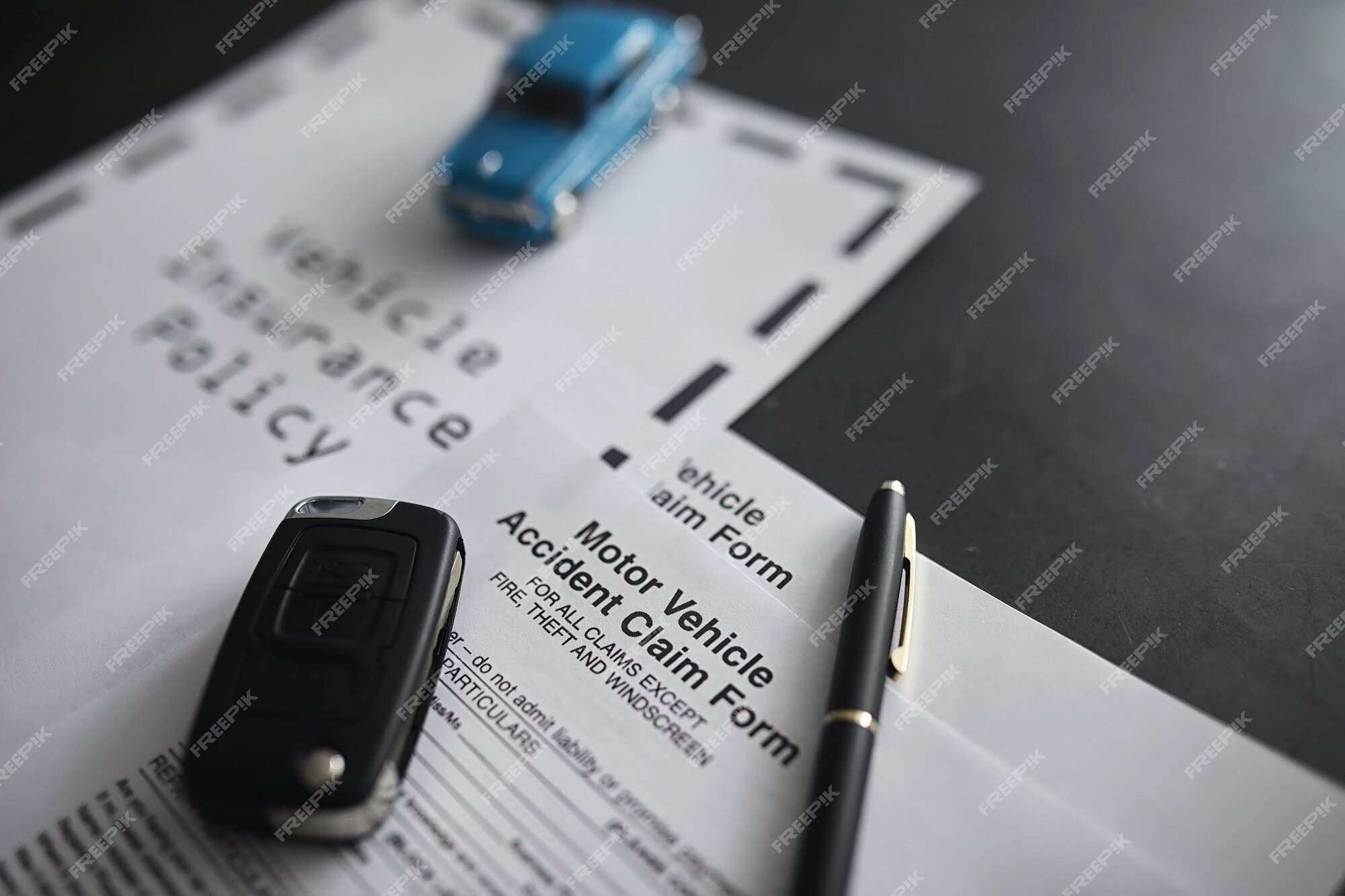

Finance
How Much Cargo Insurance Do I Need?
Published: November 15, 2023
Determining how much cargo insurance you need for your finances is crucial. Learn how to assess the right coverage amount and protect your financial investment.
(Many of the links in this article redirect to a specific reviewed product. Your purchase of these products through affiliate links helps to generate commission for LiveWell, at no extra cost. Learn more)
Table of Contents
Introduction
Transporting goods can always be a risky business, no matter how cautious and careful you are. From unforeseen accidents to theft or damage, there are numerous uncertainties that can jeopardize the safety of your cargo. This is where cargo insurance becomes invaluable.
Cargo insurance provides financial protection for your goods while they are in transit, covering any potential losses or damages that may occur. It offers you peace of mind, knowing that your investment is safeguarded against the unforeseen.
However, determining how much cargo insurance you need can be a daunting task. With various factors to consider and different types of coverage available, it’s essential to understand the key considerations in order to make an informed decision.
In this article, we will delve into the world of cargo insurance and guide you through the process of determining the appropriate coverage limits for your specific needs. From evaluating the value of your goods to assessing risk factors and contractual requirements, we will cover it all.
So, whether you’re a business owner shipping products abroad or an individual transporting personal belongings, read on to discover how to navigate the intricacies of cargo insurance and ensure you have the right amount of coverage.
Understanding Cargo Insurance
Cargo insurance is a type of insurance that protects the owner or sender of goods against loss, damage, or theft during transportation. It provides financial compensation for the value of the goods being shipped, allowing businesses and individuals to mitigate the potential financial impact of any unforeseen events.
There are different types of cargo insurance available, depending on the mode of transportation and the specific needs of the shipper. These include marine cargo insurance for goods transported by sea, air cargo insurance for goods transported by air, and inland cargo insurance for goods transported by land.
When determining the appropriate cargo insurance coverage, it is important to understand the various terms and conditions associated with the policy. This includes the coverage limits, deductibles, exclusions, and the specific perils that are covered. Perils often covered include theft, fire, collision, sinking, overturning, and natural disasters like hurricanes or earthquakes.
It is worth noting that general cargo insurance policies typically have limitations and exclusions. These may include high-value items such as cash, jewelry, negotiable instruments, or hazardous materials. Therefore, it is important to carefully review the policy and consider additional coverage options if needed.
The cost of cargo insurance is typically calculated based on the total value of the goods being shipped. The premium rate is a percentage of the declared value and varies depending on the type of goods, mode of transportation, and the assessed level of risk associated with the shipment.
By understanding the basics of cargo insurance, you can make an informed decision about the type and amount of coverage needed to protect your goods during transit. This knowledge will enable you to choose the right insurance policy and ensure that you are adequately protected against potential losses or damages.
Factors to Consider
When determining how much cargo insurance you need, there are several key factors that should be considered. These factors will help you assess the value of your goods, calculate appropriate coverage limits, and determine the type of coverage that best suits your needs.
1. Value of Goods: The first factor to consider is the value of the goods being shipped. This includes both the monetary value and the significance of the items. High-value goods may require higher coverage limits to adequately protect against potential losses.
2. Type of Goods: The nature of the goods being transported is another important consideration. Perishable or fragile items may be prone to damage during transit and may require additional coverage or specialized coverage for specific perils.
3. Mode of Transportation: The mode of transportation chosen also impacts the level of risk associated with the shipment. Different modes such as sea, air, or land transportation have varying levels of risk, and the insurance coverage may need to be adjusted accordingly.
4. Transit Route: The route that the goods will be taking can also affect the level of risk. Shipment through areas prone to natural disasters, political instability, or high rates of theft may require higher coverage limits to mitigate potential losses.
5. Past Loss History: If you have experienced previous losses or damages during shipment, it is important to take this into account when determining your coverage needs. A history of losses may indicate a higher level of risk and the need for increased coverage.
6. Destination Country: The destination country and its specific regulations regarding cargo insurance should also be considered. Some countries may have minimum insurance requirements that need to be met, and failure to comply with these requirements could result in delays or penalties.
By carefully considering these factors, you can assess your specific needs and determine the appropriate amount of cargo insurance coverage. It is recommended to consult with an experienced insurance professional who specializes in cargo insurance to ensure that all aspects are taken into account and that you have adequate protection for your valuable goods.
Assessing the Value of Goods
One of the crucial steps in determining the appropriate amount of cargo insurance is accurately assessing the value of the goods being shipped. This assessment is essential for calculating coverage limits and ensuring that you have adequate protection in case of loss or damage.
Here are some key considerations when assessing the value of your goods:
1. Invoice Value: The invoice value is the most straightforward method of determining the value of your goods. It involves taking the total amount listed on the invoice, including any additional costs such as freight charges, taxes, and duties.
2. Replacement Value: The replacement value reflects the cost of replacing the goods with identical or similar items in the event of loss or damage. This value takes into account the current market value of the goods.
3. Market Value: The market value represents the price that the goods would fetch if they were sold in the current market. This value is useful for items that have fluctuating prices or for unique items that may not have a direct replacement value.
4. Declared Value: The declared value is the value that you assign to the goods for insurance purposes. It should accurately reflect the value of the goods and should be supported by relevant documentation such as invoices, appraisals, or sales receipts.
It is important to note that underestimating the value of your goods can lead to inadequate coverage, while overestimating may result in paying higher insurance premiums than necessary. It is best to be as accurate as possible when assessing the value of your goods.
Consider consulting with experts in the industry or utilizing market research to ensure that your valuation is realistic and up-to-date. Additionally, documenting the process of assessment can help support your claim in case of any disputes during the insurance claim process.
By carefully assessing the value of your goods, you can determine the appropriate coverage limits and ensure that you are adequately protected. Remember, it is better to err on the side of caution and have sufficient coverage rather than facing potential financial losses if the worst were to happen.
Calculating Coverage Limits
Once you have assessed the value of your goods, the next step is to calculate the appropriate coverage limits for your cargo insurance. Your coverage limits should reflect the potential losses you may incur in the event of damage, loss, or theft during transit.
Here are the key factors to consider when calculating your coverage limits:
1. Percentage Coverage: Many cargo insurance policies offer coverage based on a percentage of the goods’ value. For example, you may choose coverage for 100% of the goods’ value or opt for a lower percentage depending on your risk tolerance. Ensure that the coverage percentage aligns with your needs and the value of the goods.
2. Additional Costs: Consider any additional costs associated with the potential loss or damage of your goods. This may include expenses for re-shipping, customs fees, or warehousing. Factoring in these costs will help ensure you have sufficient coverage to handle the full financial impact of any incidents.
3. Excess and Deductibles: Familiarize yourself with the excess and deductible requirements of the insurance policy. Excess is the amount you need to pay before the insurance coverage applies, while the deductible is the amount you would be responsible for in the event of a claim. Balancing these factors can help determine the appropriate coverage and associated costs.
4. Trade and Industry Standards: Consider any trade or industry standards that may influence your coverage limits. Certain industries may have specific requirements or expectations for cargo insurance coverage. It’s important to research and understand these standards to ensure compliance and adequate protection.
5. Regulatory and Contractual Requirements: Be aware of any regulatory or contractual requirements related to cargo insurance. Some countries or contracts may impose minimum insurance coverage limits that you must meet. Failing to comply with these requirements could result in legal or financial consequences.
By carefully considering these factors, you can calculate the appropriate coverage limits for your cargo insurance. It is recommended to discuss your specific needs with an experienced insurance professional who can guide you through the process and help ensure that you have adequate protection for your goods.
Remember, it is essential to regularly review and reassess your coverage limits to account for any changes in the value of your goods, industry standards, or regulatory requirements. Keeping your cargo insurance up to date will provide you with peace of mind and financial protection during the transportation of your valuable goods.
Determining Coverage Type
When it comes to cargo insurance, there are different types of coverage available depending on the specific needs of the shipper and the nature of the goods being transported. It is important to understand the various coverage types in order to choose the one that best suits your requirements.
Here are some common types of cargo insurance coverage:
1. All-Risk Coverage: All-risk coverage provides the broadest form of protection for your goods during transit. It covers a wide range of risks, including damage, theft, and loss, unless specifically excluded in the policy. This type of coverage is often recommended for high-value or irreplaceable goods.
2. Named Perils Coverage: Named perils coverage provides protection specifically against risks that are listed and specified in the policy. Common named perils include fire, collision, sinking, overturning, and theft. This type of coverage may be more budget-friendly, but it offers limited protection compared to all-risk coverage.
3. Warehouse-to-Warehouse Coverage: Warehouse-to-warehouse coverage covers your goods from the moment they leave the origin warehouse until they reach the destination warehouse. This type of coverage provides end-to-end protection and is suitable for goods that require protection throughout the entire transportation process.
4. Inland Cargo Coverage: Inland cargo coverage is specifically designed for goods transported by land. It provides protection against risks such as collisions and theft during overland transportation. If you primarily transport goods by road or rail, inland cargo coverage may be the most suitable option for you.
5. Reefer Coverage: Reefer coverage is specific to the transportation of perishable goods that require temperature control, such as fresh produce or pharmaceuticals. This coverage ensures that any losses or damages resulting from temperature deviations or mechanical failures of refrigerated containers are covered.
Choosing the right type of coverage depends on factors such as the nature of your goods, the mode of transportation, and your risk tolerance. It is recommended to consult with an experienced insurance provider who can assess your specific needs and guide you in selecting the most appropriate coverage type.
Remember to carefully review the terms and conditions of the policy, including any exclusions, limitations, or additional coverage options available. Taking the time to understand the coverage type and its specific provisions will help ensure that you have the right level of protection for your cargo.
Evaluating Risk Factors
When determining how much cargo insurance you need, it is crucial to evaluate the risk factors associated with the transportation of your goods. Understanding and assessing these risk factors will help you determine the level of coverage required and enable you to mitigate potential losses effectively.
Here are some common risk factors to consider:
1. Mode of Transportation: Different modes of transportation present varying levels of risk. For example, sea transportation may be more prone to accidents or losses due to weather conditions, while air transportation may have a lower risk of damage but a higher risk of theft. Evaluate the risks associated with the mode of transportation you use to ensure that adequate coverage is in place.
2. Geographical Risk: The geographical route and destination of your goods impact the level of risk. Evaluate the potential risks, such as political instability, natural disasters, or high rates of theft, in the regions your goods will pass through or be delivered to. Adjust the coverage limits accordingly to protect against these specific risks.
3. Security Measures: The security measures you have in place to protect your goods during transportation can affect the level of risk. Assess the security protocols of your carriers, including their track record of safety and their compliance with industry standards. Additionally, consider implementing additional security measures such as GPS tracking, tamper-evident seals, or secure packaging to minimize risk.
4. Seasonal or External Factors: Seasonal factors or external influences, such as holidays, strikes, or adverse weather conditions, can impact the risk level during transportation. Take into account any specific risks associated with certain times of the year or external events that may increase the likelihood of losses or delays.
5. Product Sensitivity: The sensitivity of your goods to damage or spoilage should be considered when evaluating risk. Fragile or perishable items may require additional coverage or specialized conditions during transportation to safeguard against potential losses.
By thoroughly evaluating these risk factors, you can better determine the level of coverage needed for your cargo insurance. It is also advisable to consult with an insurance professional specializing in cargo insurance who can provide guidance based on their expertise and knowledge of industry-specific risks.
Regularly assess and re-evaluate these risk factors as your business or transportation needs evolve. By staying proactive and adaptable to potential risks, you can ensure that your cargo insurance coverage adequately protects your valuable goods.
Contractual Requirements
When it comes to cargo insurance, it is important to consider any contractual requirements that may impact the amount of coverage you need. Contracts with carriers, customers, or suppliers may have specific provisions regarding insurance coverage, and failure to comply with these requirements can result in legal or financial consequences.
Here are some key aspects to consider when evaluating contractual requirements:
1. Minimum Coverage Limits: Some contracts may stipulate minimum coverage limits that must be met. These limits are typically based on the value of the goods being transported or industry standards. Ensure that your insurance policy provides coverage that meets or exceeds these contractual minimums.
2. Certificate of Insurance: Many contracts require the insured party to provide a certificate of insurance demonstrating that cargo insurance is in place. This document serves as proof that you have obtained the necessary coverage and can be requested by the other party as part of the contractual agreement.
3. Additional Insured: Contractual requirements may also include adding the other party as an additional insured on your cargo insurance policy. This ensures that they also benefit from the coverage in case of loss or damage. Check if this provision is specified in your contracts and make the necessary arrangements with your insurance provider.
4. Policy Term and Renewals: Contracts may include provisions related to the duration of the insurance coverage and the need for renewals. Ensure that your policy aligns with the contractual timelines and that you have a mechanism in place to renew the coverage as necessary to avoid any gaps in protection.
5. Notice Requirements: Some contracts may require immediate notification of any loss or damage to the goods during transportation. Be aware of these notice requirements and ensure that you have a process in place to promptly inform both your insurance provider and the contracting party in the event of a claim.
It is essential to carefully review the contractual obligations and requirements related to cargo insurance. Failure to meet these requirements can lead to legal disputes, financial liabilities, or damage to business relationships. Working closely with legal counsel and insurance professionals can help ensure that you comply with the contractual obligations and have the necessary coverage in place.
Regularly review your contracts and communicate with relevant parties to stay informed of any changes or updates to the insurance requirements. By fulfilling your contractual obligations, you can protect your interests while maintaining positive relationships with your business partners.
Additional Coverage Considerations
While standard cargo insurance provides essential coverage for loss, damage, or theft during transportation, there are additional coverage options that you may want to consider to enhance the protection for your goods. Depending on your specific needs and the nature of your cargo, these additional coverages can offer added peace of mind and financial security.
Here are some additional coverage considerations to evaluate:
1. War and Terrorism Coverage: War and terrorism coverage provides protection against losses or damages caused by acts of war, civil unrest, or acts of terrorism. If your goods will be passing through regions with a higher risk of such occurrences, this coverage can help safeguard against potential losses.
2. Cyber Liability Coverage: In today’s digital world, the risk of cyberattacks, data breaches, or ransomware attacks is a growing concern. Cyber liability coverage can provide protection against losses or damages related to cybersecurity incidents that may impact your cargo or shipping operations.
3. Product Recall Coverage: If you are transporting goods that have the potential for product recalls, such as food products or pharmaceuticals, product recall coverage can protect you from financial losses associated with the recall process.
4. Delay in Start-Up Coverage: If delays in transportation or delivery could have a significant financial impact on your business operations, delay in start-up coverage can provide compensation for financial losses incurred during the delay period.
5. Specialized Equipment Coverage: If your cargo requires specialized equipment for transportation, such as refrigerated containers or specialized handling devices, specialized equipment coverage can protect against losses or damages specifically related to the equipment.
These additional coverage options may come with their own terms, conditions, and limitations. It is important to thoroughly review and understand the specifics of each additional coverage option before making a decision. Consult with an experienced insurance professional who can help assess your needs and guide you in selecting the appropriate additional coverages.
It is also worth noting that some insurance providers offer customizable policies that allow you to tailor your coverage to your unique requirements. This can be beneficial if you have specific risks or concerns that are not adequately addressed by standard cargo insurance options.
By carefully considering these additional coverage considerations, you can enhance your cargo insurance policy and ensure comprehensive coverage for your goods throughout the transportation process. The right combination of coverage options will provide you with the peace of mind and financial protection you need to safeguard your valuable cargo.
Conclusion
Ensuring that you have the appropriate amount of cargo insurance is vital to protect your goods during transportation. By considering factors such as the value of your goods, type of coverage, risk factors, and contractual requirements, you can make informed decisions to mitigate potential losses effectively.
Assessing the value of your goods accurately allows you to calculate the coverage limits needed to adequately protect your investment. Understanding the different types of coverage available enables you to choose the one that aligns best with the nature of your goods and transportation methods.
Evaluating risk factors associated with your specific shipment helps you anticipate potential pitfalls and implement necessary preventive measures. Compliance with contractual requirements ensures that you meet any minimum coverage limits, certificate of insurance obligations, and additional insured provisions outlined in your contracts.
Finally, considering additional coverage options, such as war and terrorism coverage or specialized equipment coverage, can provide enhanced protection tailored to your unique needs.
It is crucial to regularly review and reassess your cargo insurance coverage as your business evolves and situations change. Consulting with insurance professionals who specialize in cargo insurance can guide you through the process, ensuring that your coverage remains comprehensive and up to date.
By taking the time to assess your needs and make informed decisions regarding cargo insurance, you can have peace of mind knowing that your valuable goods are adequately protected throughout the transportation journey.
Remember, accidents and unforeseen events can happen at any time, but with the right cargo insurance coverage in place, you can mitigate potential financial losses and continue your business operations smoothly.














